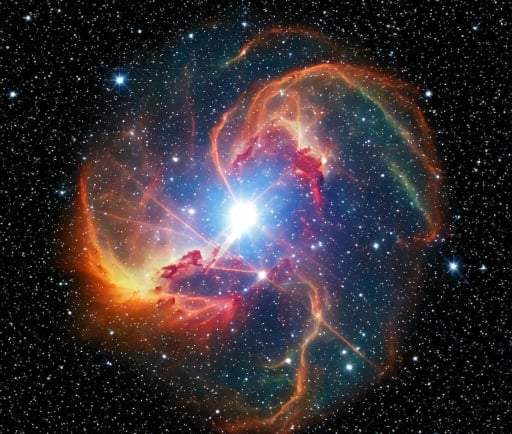Extraplanar Regions of NGC 3628: Insights from the Interaction with NGC 3627


Introduction to NGC 3628 and NGC 3627
NGC 3628, part of the famous Leo Triplet, is a barred spiral galaxy located approximately 35 million light-years away in the constellation Leo. This galaxy's unique features, including its prominent extraplanar regions, have attracted significant attention from astronomers. In an intriguing cosmic tango, NGC 3628 interacts with its neighboring galaxy, NGC 3627, which profoundly influences its structure and dynamics.
Understanding the Extraplanar Regions
The extraplanar regions of NGC 3628 represent an essential area of study for understanding not just this galaxy but also the processes governing star formation in interacting galaxy systems. These regions are typically characterized by their distinct filamentary structures, which emerge as a direct result of gravitational interactions between NGC 3628 and NGC 3627. The velocity gradient observed within these areas indicates complex dynamical behaviors typical of galaxies undergoing interactions.
Star Formation and Velocity Gradients
One of the most fascinating aspects of the extraplanar regions in NGC 3628 is the presence of active star formation. These regions display a substantial velocity gradient, showcasing how the gravitational influences exerted by NGC 3627 can trigger bursts of star formation activity in its neighboring counterpart. The physical mechanisms that account for these phenomena include the compression of gas and dust within the interaction zone, effectively igniting new stellar generations.
The interaction fuels the galaxy’s evolution, subtly altering its trajectory while invigorating the star-forming potential of NGC 3628. In many ways, this dynamic interplay of forces offers a unique observational case for astronomers aiming to comprehend the larger narrative of galactic evolution and the life cycles of galaxies.
Conclusion
In summary, the extraplanar regions of NGC 3628, formed through its captivating interaction with NGC 3627, present a remarkable laboratory for studying the effects of galaxy interactions on star formation. Understanding these intricate dynamics not only enhances our knowledge of individual galaxies but also contributes to the broader field of astrophysics, shedding light on how galaxies evolve and interact across the universe. As research continues, the velocity gradients and star formation processes within NGC 3628 will remain at the forefront of astronomical inquiry, inspiring even deeper exploration into the cosmos.
